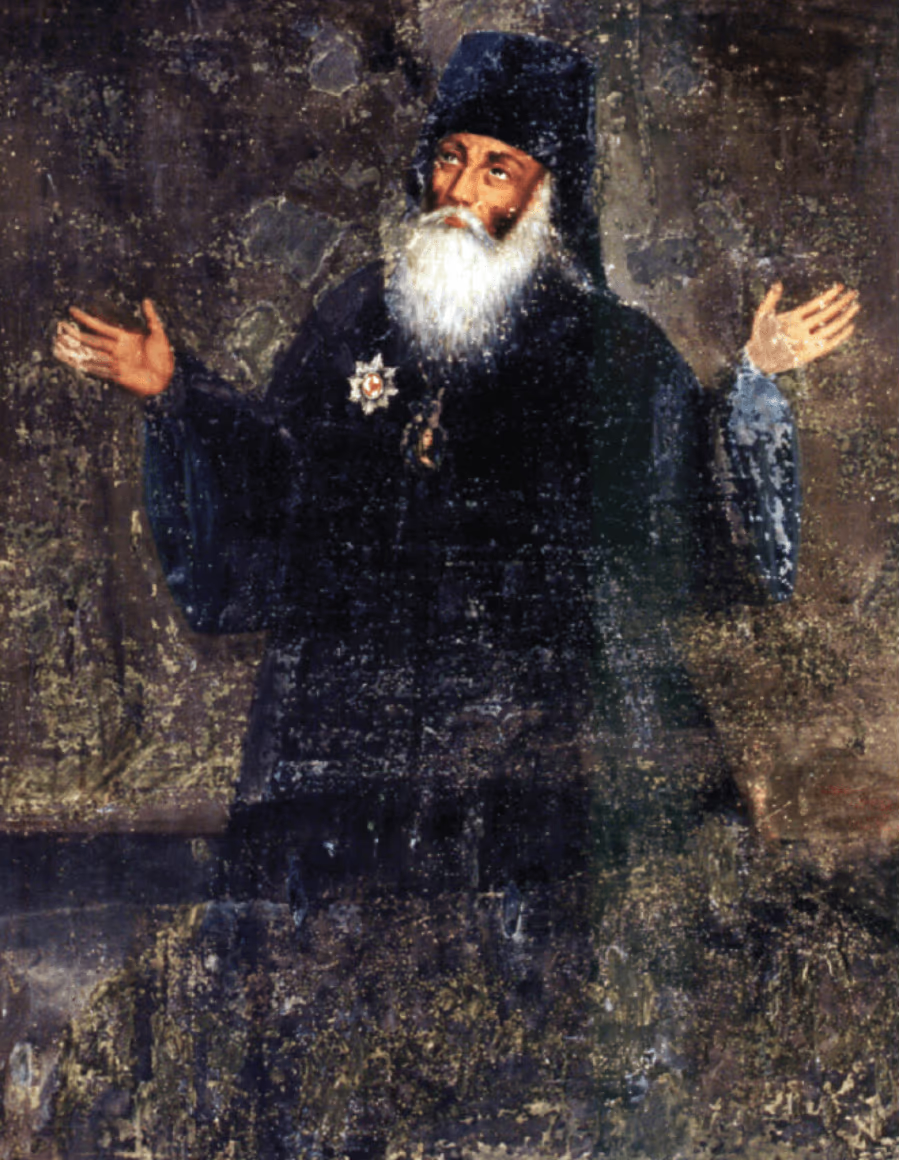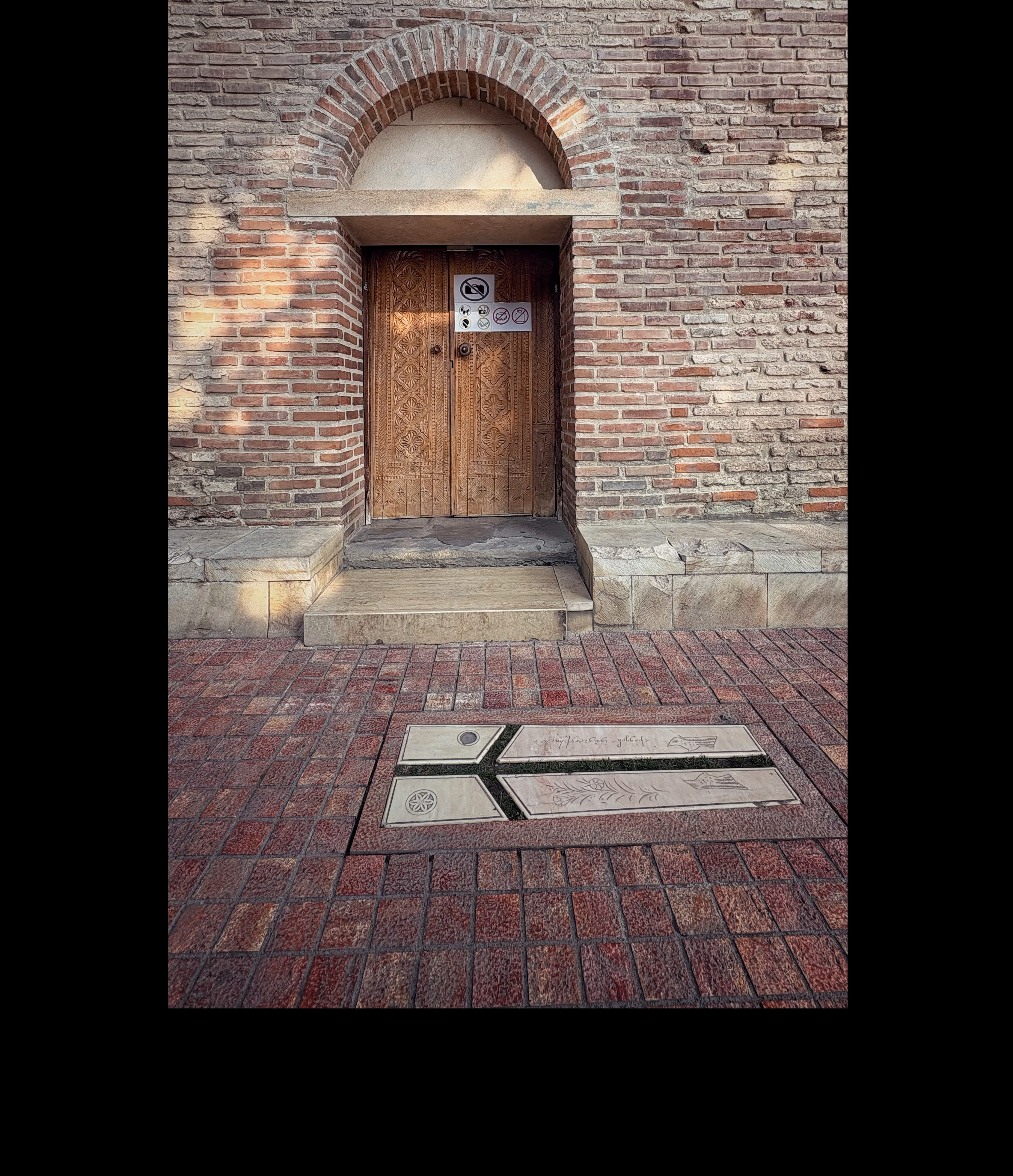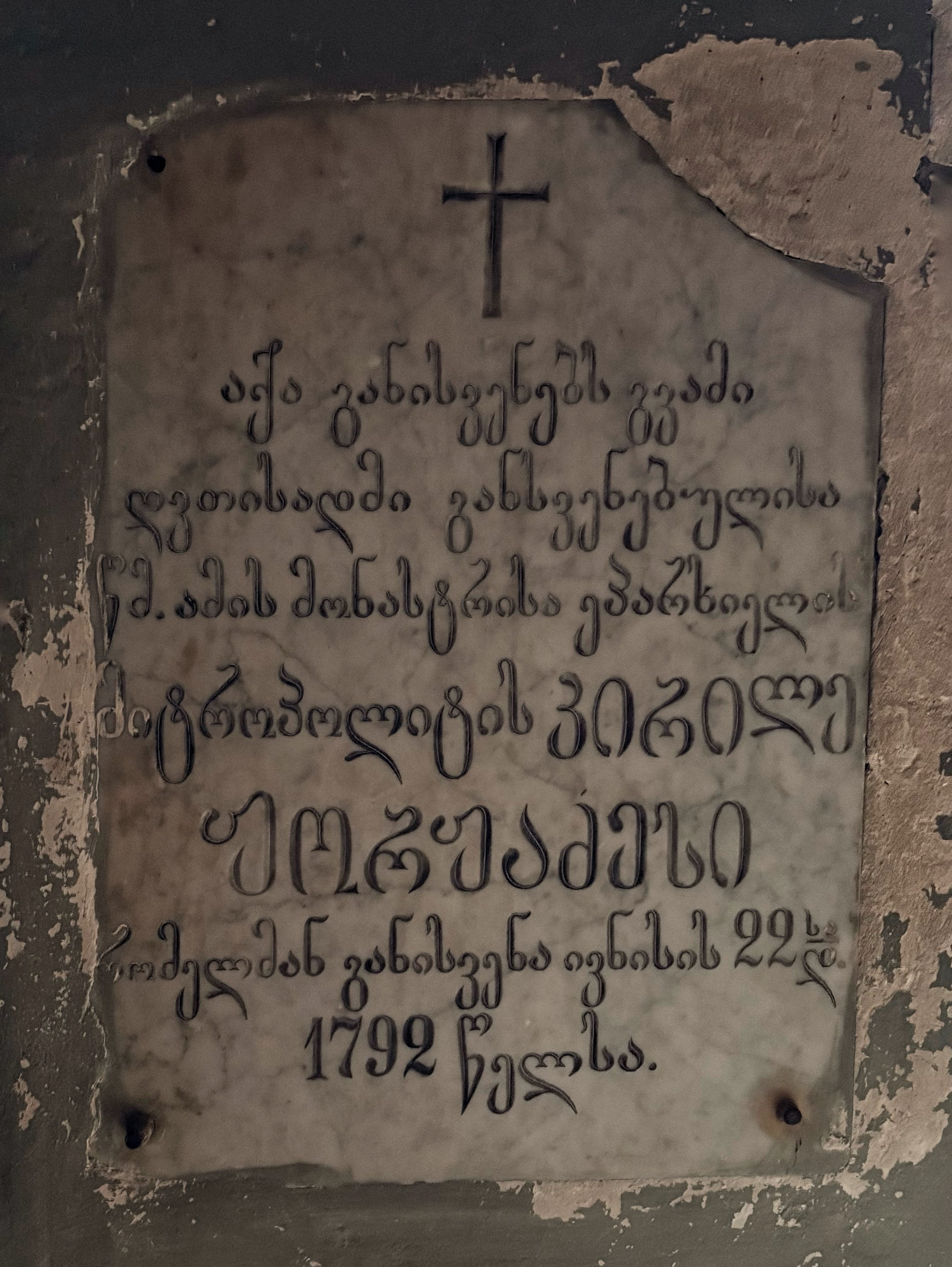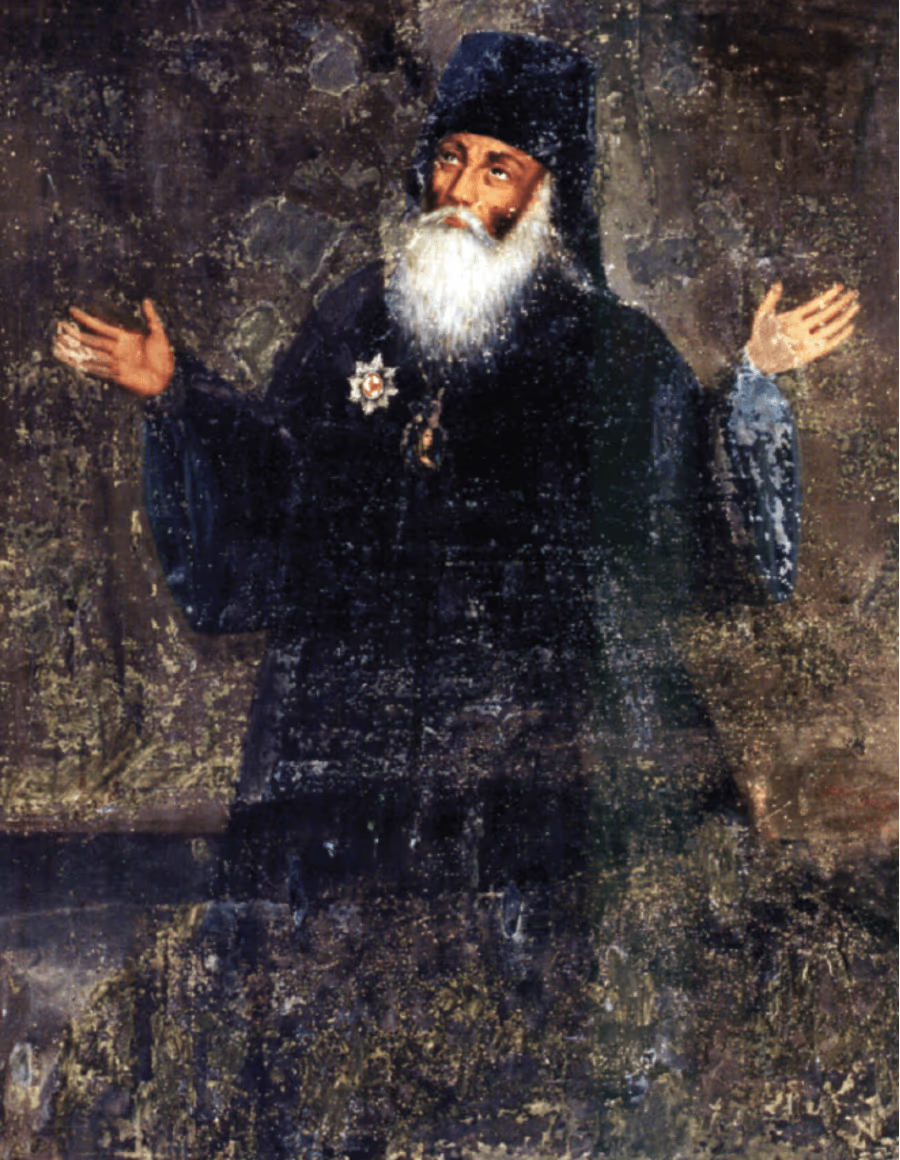St. George’s Church
The Church of Saint George is the oldest structure within the convent, built in the first half of the 4th century. It was constructed by King Mirian immediately after the repose of Saint Nino, directly over her tomb. In the 5th century, King Vakhtang Gorgasali expanded the church. The church is thought to have acquired the form of a three-aisled basilica in the 9th century.
The church suffered severe damaged during an earthquake in the 14th century, at which time its western façade was repaired with glazed bricks.
In the 17th century, the invasions of Shah Abbas caused great destruction to the church, after which it was restored by King Teimuraz I. In the period following the 17th century, the walls were thickened to strengthen the structure.
In 1823, with the blessing of Bishop Ioane Makashvili of Bodbe, the church interior was painted and a new iconostasis was installed. The wall paintings – displaying features of the transitional period between the Middle Ages and modern times – are believed to have been executed in oil by a Georgian artist. The iconostasis was produced in the workshop of the David Gareji Monastery.
Porches were added in front of the southern and northern entrances, and a false dome was built above the central nave of the basilica.
In the 20th century, the church underwent major restoration by specialists from the Cultural Heritage Protection Department. During this work, the porches, false dome, and coloured glazed layer were removed. The church was cleared of later additions, and its original architectural form was revealed.
Most of the icons preserved in the church today date from the 19th century.
The church suffered severe damaged during an earthquake in the 14th century, at which time its western façade was repaired with glazed bricks.
In the 17th century, the invasions of Shah Abbas caused great destruction to the church, after which it was restored by King Teimuraz I. In the period following the 17th century, the walls were thickened to strengthen the structure.
In 1823, with the blessing of Bishop Ioane Makashvili of Bodbe, the church interior was painted and a new iconostasis was installed. The wall paintings – displaying features of the transitional period between the Middle Ages and modern times – are believed to have been executed in oil by a Georgian artist. The iconostasis was produced in the workshop of the David Gareji Monastery.
Porches were added in front of the southern and northern entrances, and a false dome was built above the central nave of the basilica.
In the 20th century, the church underwent major restoration by specialists from the Cultural Heritage Protection Department. During this work, the porches, false dome, and coloured glazed layer were removed. The church was cleared of later additions, and its original architectural form was revealed.
Most of the icons preserved in the church today date from the 19th century.
0:00
0:00



